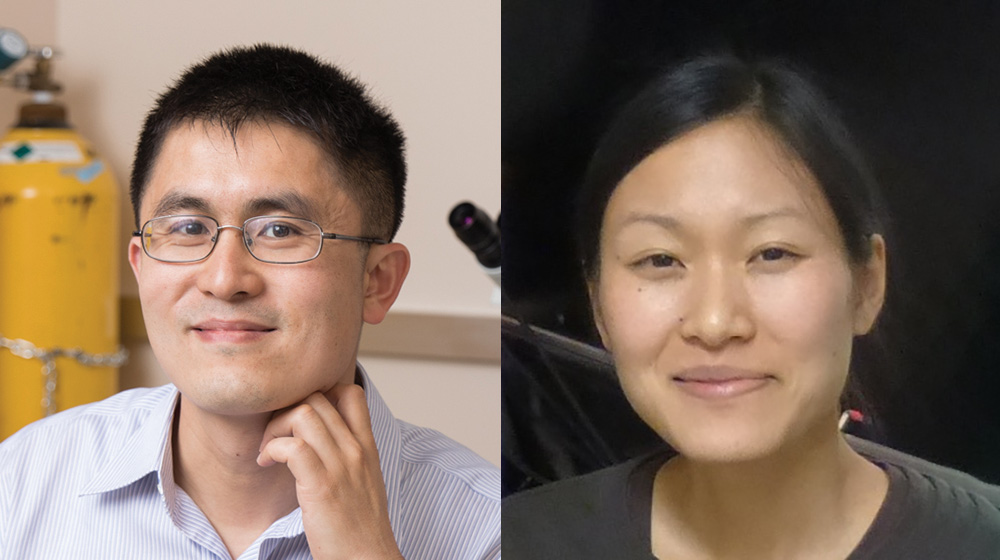
“The eyes are such a beautiful window to understanding how our brain works,” Felice Dunn, PhD (Pictured, right)
A patient’s eyes may offer early warnings of neurodegenerative diseases, say two UCSF scientists, who call the retina a “window” to the brain.
Working in labs located side-by-side in UCSF’s Department of Ophthalmology, scientists Felice Dunn, PhD, and Xin Duan, PhD, have pooled their expertise to create genetic, genomic, and imaging tools that use the eyes’ retinal ganglion cells (RGC) to gain access to the brain.
They found that RGCs – the neuronal cells near the retina’s inner surface with long axons that conduct impulses into the brain – provide the perfect portal to the central nervous system. In fact, Dr. Dunn notes, the retina is the only part of our nervous system that can actually be seen, given that the brain and spinal cord are covered by flesh and bones.
“The eyes are such a beautiful window to understanding how our brain works,” says Dr. Duan, an expert in designing genetic tools for applications in neuroscience. “This work represents an emerging opportunity that offers transformative value to the entire neuroscience research discipline, and we greatly appreciate the Weills’ support so we can do it.”
Winning the Weill Trailblazer Award has given Dr. Dunn and Dr. Duan just the opportunity they needed to study how the retina “talks” to the brain.
“There is no way to see dysfunction so subtly other than in the eyes,” explains Dr. Dunn, a retinal physiologist who has focused on vision her entire career. “Xin’s work says that specific cell types are more susceptible to injuries from disease. They are our canaries in a coalmine. The Weill award allows us to search for those canaries.”
Using advanced imaging tools, the scientists are examining the eyes to search for neurological deficits in the retina, knowing that neurological diseases can leave “signatures” there. In other words, the eye may show damage before neurological defects manifest elsewhere in the body – providing scientists with a new avenue of diagnosis for neurological disorders. Plus, understanding how RGCs respond to neurological diseases and injuries could lead to identifying the biomarkers of these disorders in the retina.
Both Dr. Duan and Dr. Dunn emphasize that neither could do the work they have proposed alone, nor could they get funding from the National Institutes of Health, which requires “proof of principle” first. They also praised UCSF as one of the few – and one of the best – institutions in the world where creativity and collaboration among scientists at all levels is encouraged.
“Every senior investigator I have ever approached for advice or scientific help has rewarded me,” says Dr. Dunn. “UCSF is a very collegial place.”
Dr. Duan says he could have pursued his research on the East Coast, but came to UCSF because of philanthropic support such as that offered by the Weills. “The Weill award offers a great opportunity to help junior scientists jumpstart their programs,” he says, “and we are all very grateful for the help.”


